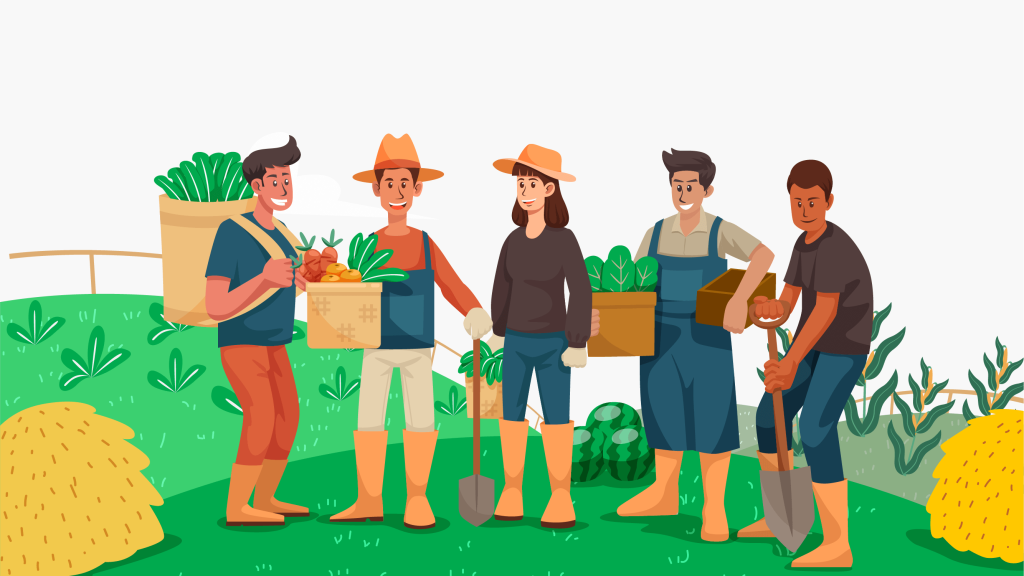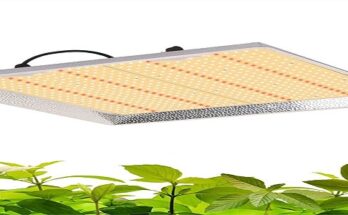As people grow increasingly aware of the environmental harm caused by large-scale agribusiness, eco-friendly farming has come under scrutiny.
Sustainable farming is a remedy that can counteract harms such as the clearing of forests, the loss of habitats, the toxicity of pesticides, and excessive carbon outputs. Governments and environmentalists aggressively support eco-friendly and sustainable farming methods to mitigate these effects.
For sustainable soybean production on a national scale, The U.S. Soy Sustainability Assurance Protocol (SSAP) supports the outlined farming strategies that ensure green and ecologically friendly soy growth. As a result, this leads to quality outputs that meet market standards.
1. Make use of Renewable Energy Sources
Utilizing alternative energy sources is the first and most crucial action. Utilizing wind, hydro, or solar farms have minimal adverse environmental effects. Solar energy can be stored by farmers using solar panels to power heaters, pumps, and fences.
You can also use river water in motion to power various farm equipment and produce hydroelectricity.
2. Hydroponics and Aquaponics

Plants grow without soil in these novel agricultural techniques and are nourished by specialized nutrients given to water.
Crops are grown in hydroponic systems with their roots directly in a mineral solution or inert media such as gravel or perlite. Aquaponics combines breeding aquatic animals (such as fish) and cultivating hydroponic crops.
The water containing nutrients from aquaculture fish waste’s mineralization is utilized to feed the hydroponic plants. As the plants use the water, it is cleaned and re-circulated back into the system for usage by the fish.
Both hydroponic and aquaponic systems are available in various sizes, from small home-scale to large commercial-scale systems.
3. Permaculture

Permaculture is a food production method incorporating intention, design, and smart farming to reduce resource waste and boost production efficiency. The emphasis is on using perennial crops such as fruit trees, nut trees, and shrubs that all work together in a structured system that simulates how plants function in a natural ecosystem.
Growing grain without plowing, herb and plant spirals, hugelkultur garden beds, keyhole and mandala gardens, and sheet mulching are all permaculture design techniques.
Why is Permaculture environment-friendly?
Avoids the use of chemical fertilizers and pesticides
Chemical fertilizers will also degrade the fertility of the soil over time, causing severe difficulties. Organic fertilizers are preferred over chemical fertilizers and pesticides in permaculture.
As a result, many insects will be protected, and you will mitigate the problem of soil and groundwater contamination.
Protects animals and plants’ habitats
Another reason permaculture is an environmentally beneficial farming system that it advocates for preserving a certain amount of land to safeguard the habitats of animals and plants. As a result, it benefits our local flora and animals as well.
Reduces soil and air pollution
The soil is better protected from pollution because permaculture utilizes substantially fewer chemical fertilizers and pesticides.
It also attempts to reduce our carbon footprint. Permaculture decreases agricultural machinery use, emitting poisonous pollutants into the environment.
4. Agroforestry

Agroforestry has become valuable for farmers in dry locations with desertifying soils. When addressed properly, it entails the growth of trees and shrubs among crops or grazing land, incorporating both agriculture and forestry practices for long-term, productive, and diverse land use.
The trees here produce a beneficial microclimate that stabilizes the temperature and soil humidity while sheltering crops from wind and heavy rain. They also increase soil structure, stabilize soils, and reduce nutrient discharge.
Trees in this farming method also give timber and fruits as an additional source of revenue for farmers and product diversification opportunities. Farmers can even cultivate an entire edible forest.
Why is agroforestry an Eco-friendly Farming Method?
Soil fertility and stability
Well-managed trees can help to maintain soil fertility by increasing organic matter and nutrient cycling. Significantly, agroforestry soils include more nitrogen, phosphorus, calcium, potassium, and organic carbon.
Also, trees extract nutrients from deeper soil layers more efficiently than annual crops because of their vast roots.
Low input of agrochemicals
Synthetic fertilizers would be less needed since agroforestry improves soil quality, distributes nutrients, and favors microclimate to support plant growth and animals.
Climate change mitigation
Agroforestry not only aids in the control of deforestation but also aids in the absorption of carbon. No wonder it is one of the most critical climate mitigation measures used in agriculture, according to the United Nations Framework Convention on Climate Change (UNFCCC).
Prevention of damage to forests
This environmentally beneficial agriculture approach also aids in the prevention of deforestation by producing both wood and non-wood products while allowing you to farm many crops in the exact location.
5. Biodynamic Farming

Based on the theory of “anthroposophy,” biodynamics integrates ecological and holistic farming approaches. Biodynamic approaches can be used on farms that cultivate various fruits and vegetables, gardens, vineyards, and other types of agriculture.
The high biodiversity of plants, animals, and beneficial insects in biodynamic farming helps replenish soil fertility and boost plant growth, resulting in a resilient ecosystem that supports each other’s health.
Biodynamics focuses on onsite health and soil fertility for food production by using measures such as composting, applying animal manure from farmed animals, cover cropping, or rotating complementing crops.
Bottomline
Sustainable farming is not only profitable, but it also helps to preserve our natural resources. It also contributes to a reduction in the use of chemical fertilizers and pesticides. As a result, the process is more organic and purer.




